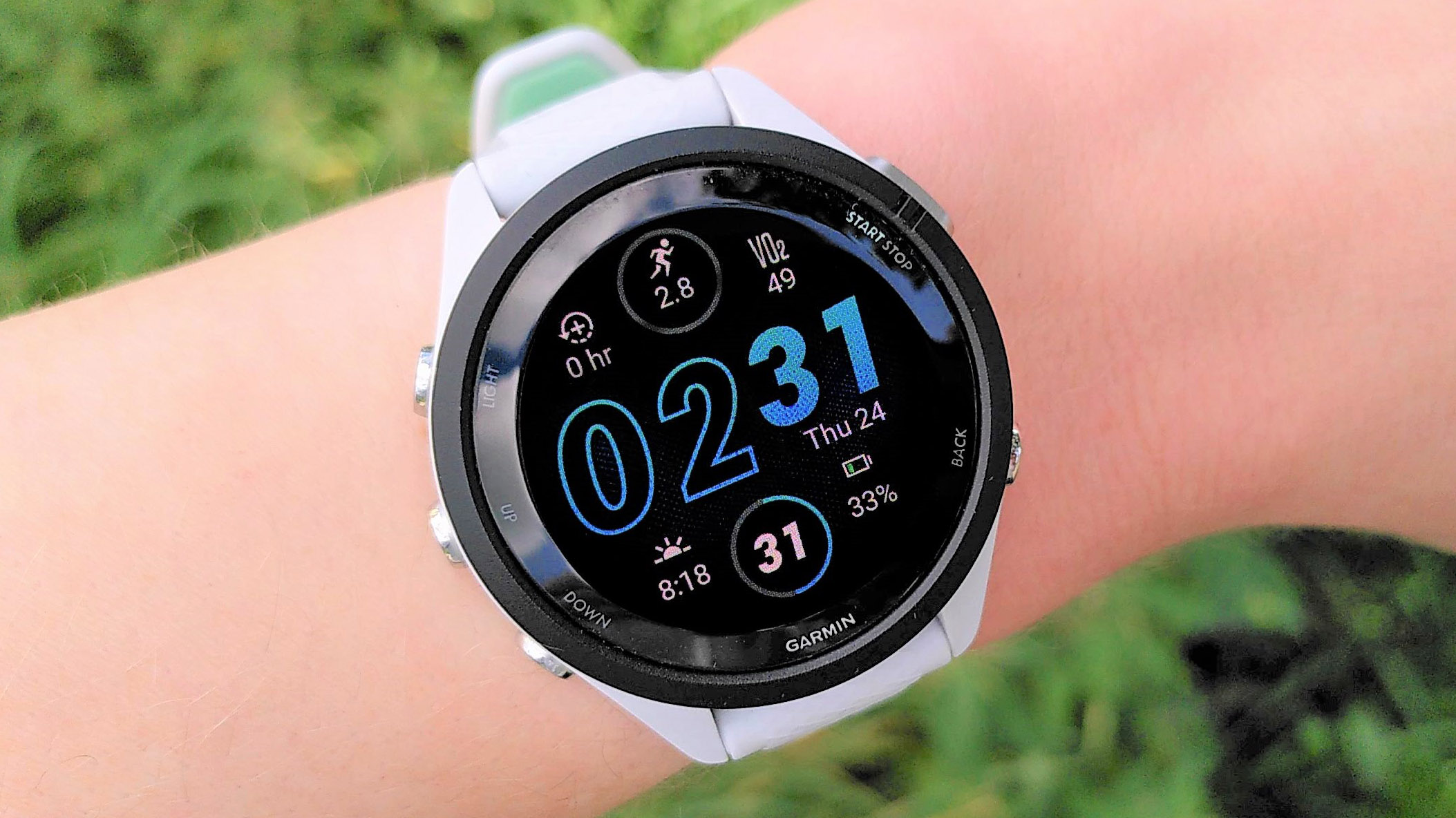
Garmin Forerunner 265: first impressions
The Garmin Forerunner 265 is essentially the same as the Forerunner 255 entry-level triathlon watch, but with a new AMOLED display rather than memory-in-pixel (MiP). That means it looks better, brighter, and crisper than the 255 – and it now has touch controls as well.
In terms of overall design, the Forerunner 265 is very similar to its predecessor. It comes in two case sizes: the standard 46mm diameter version, and a more compact 42mm edition, which I tested here.
• List price: $349.99 / £299.99
• Case size: 42mm / 46mm
• Weight: 39g / 47g
• Display type: AMOLED
• Water rating: 5ATM
• Best use: Trail running, road running, swimming, cycling, triathlon, water sports
The watch's case is made from fiber-reinforced polymer with a two-tone silicone strap (supplied in two sizes), and a Corning Gorilla Glass lens. Unlike some Garmin watches, there's no option to upgrade to a metal bezel and sapphire crystal lens, but that makes sense for a beginner-friendly sports watch.
There's no solar variant of the Forerunner 265, either. Garmin has patented a technique for inserting photovoltaic cells between the subpixels that make up an OLED display, but it's yet to be integrated into a commercial product.
This resin and silicone construction means the watch super light, weighing just 47g for the full-size version, and 39g for the smaller edition (around the same as the Forerunner 255). At just 12.9mm thick, it's so slim and light that you'll easily forget you're wearing it, and it slides easily under cuffs and gloves.
It has the same five physical buttons as all Garmin Forerunner watches, but with an extra large start/pause button marked with the word 'run', which is easier to hit when it's time to get moving. As mentioned above, it also has touchscreen controls, which are smooth and responsive. These are turned off by default during activity tracking to avoid accidentally pausing or cancelling your workouts, but you can re-enable them if you prefer. It's also possible to turn off touch controls entirely if you prefer to stick with the buttons.
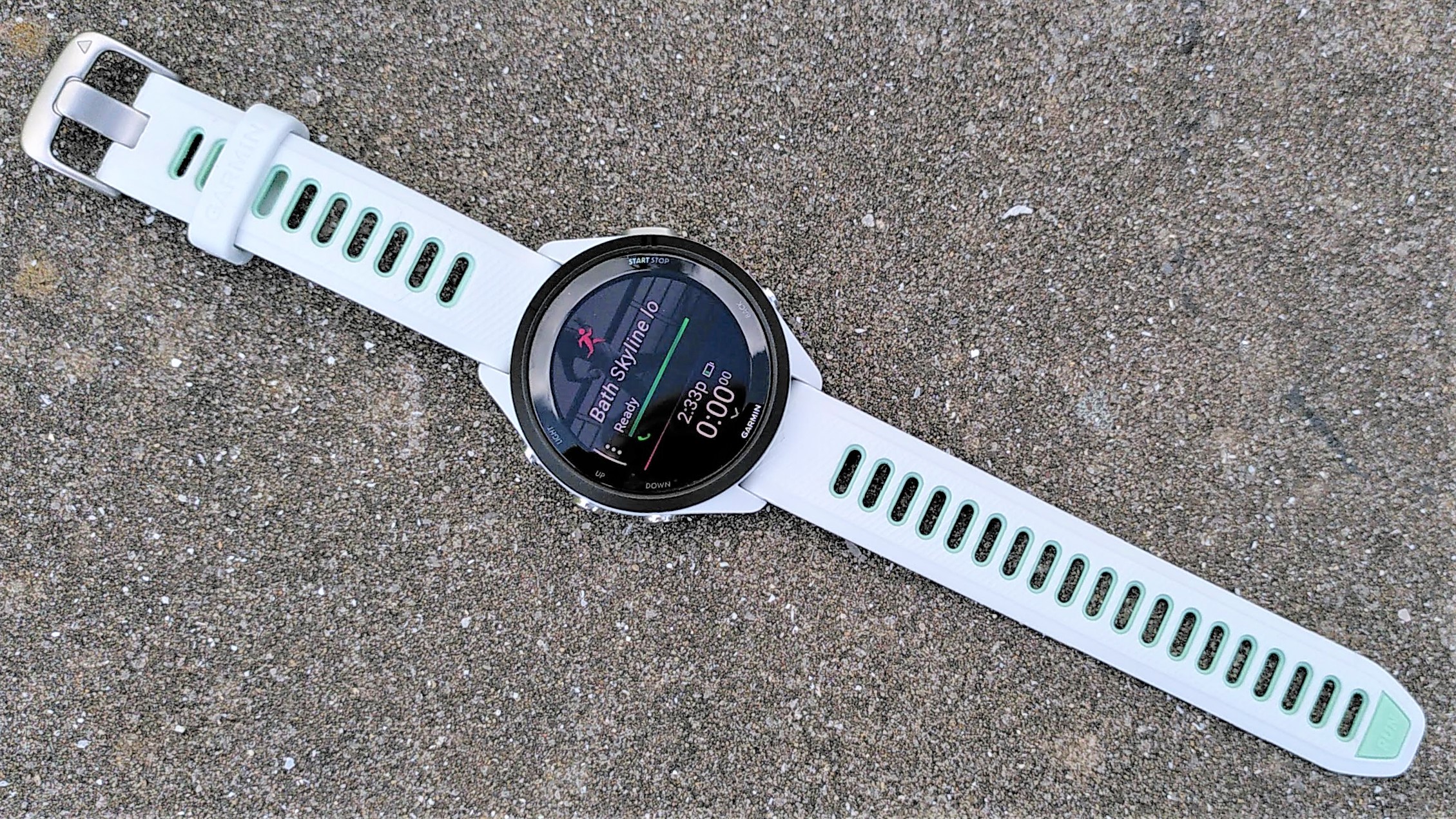
Unlike the Forerunner 255, there 265 has music playback as standard, so you can listen to music, ebooks, and podcasts through your running headphones without the need to carry your phone. You can't stream music directly through the watch, though. Only one Garmin watch to date has cellular connectivity, and that's the Forerunner 945 LTE.
The Forerunner 265 has the same heart rate monitor as the Forerunner 255 (not the new one used in the Fenix 7 Pro and Epix Pro). This also monitors SpO2 while you sleep or on demand, but there's no ECG sensor to check for irregular heart rhythms.
You might expect the new screen to result in reduced battery life compared to the Forerunner 255, but it's not quite that straightforward and depends hugely on how you use your watch. The table below shows Garmin's quoted figures for the Forerunner 255, 255S, 265, and 265S.
As you can see, the Forerunner 265 will last slightly longer between charges than the 255 in most situations, but not by much. It's worth bearing in mind that using the 265 is always-on mode will cut battery life drastically.
In my tests, I found that the Forerunner 265 didn't last quite as long in regular use as the 255 (with a GPS tracked activity once per day and no music playback), running for a little over a week before it needed charging. The difference wasn't huge though, and was very reasonable for a watch at this price point.
As you'd expect, the screen upgrades mean the Forerunner 265 is a little more expensive than its predecessor. The Garmin Forerunner 255 has a list price of $349.99/£299.99 for the base model and $399/£349.99 for the music edition, while the Forerunner 265 is $449.99/£429.99. That puts it squarely in the mid range for a GPS watch – so is it worth the extra outlay?
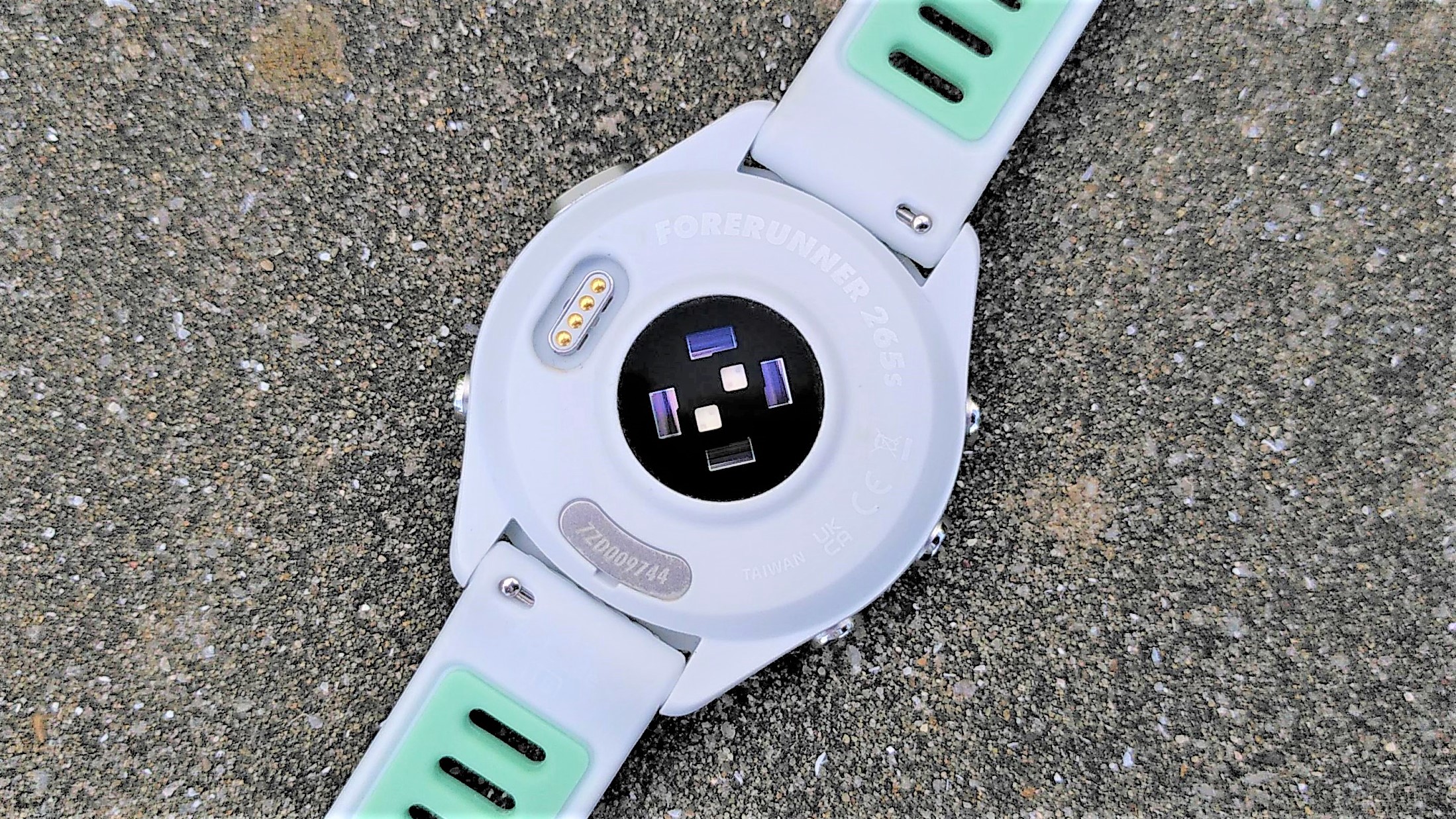
Garmin Forerunner 265: on the road
The Forerunner 265 is super straightforward to use, and would be ideal as a first sports watch. Key health and training statistics (such as heart rate and sleep) are available as 'glances', which you can scroll through by swiping up or down on the watch face, or using the up and down buttons on the side of the watch. Tapping any glance will take you to a more detailed view where you can see how the current day's figures compare to past trends, and get extra information and recommendations tailored to your needs.
Activity tracking is a simple matter of hitting the extra large start button, scrolling to your preferred sport, and hitting start again. After choosing a sport you can adjust activity-specific options by pressing the menu button. For example, you might want to pick a running workout, or set the length of your swimming pool.
The 265 doesn't offer as many activity tracking modes as higher-end Garmin watches, but there's still a good range that cover most bases. Cycling, running and swimming are particularly well catered to (as you'd expect from a triathlon watch), with a wide range of indoor and outdoor options, but you won't find modes for golf, racket sports, or games like soccer and football.
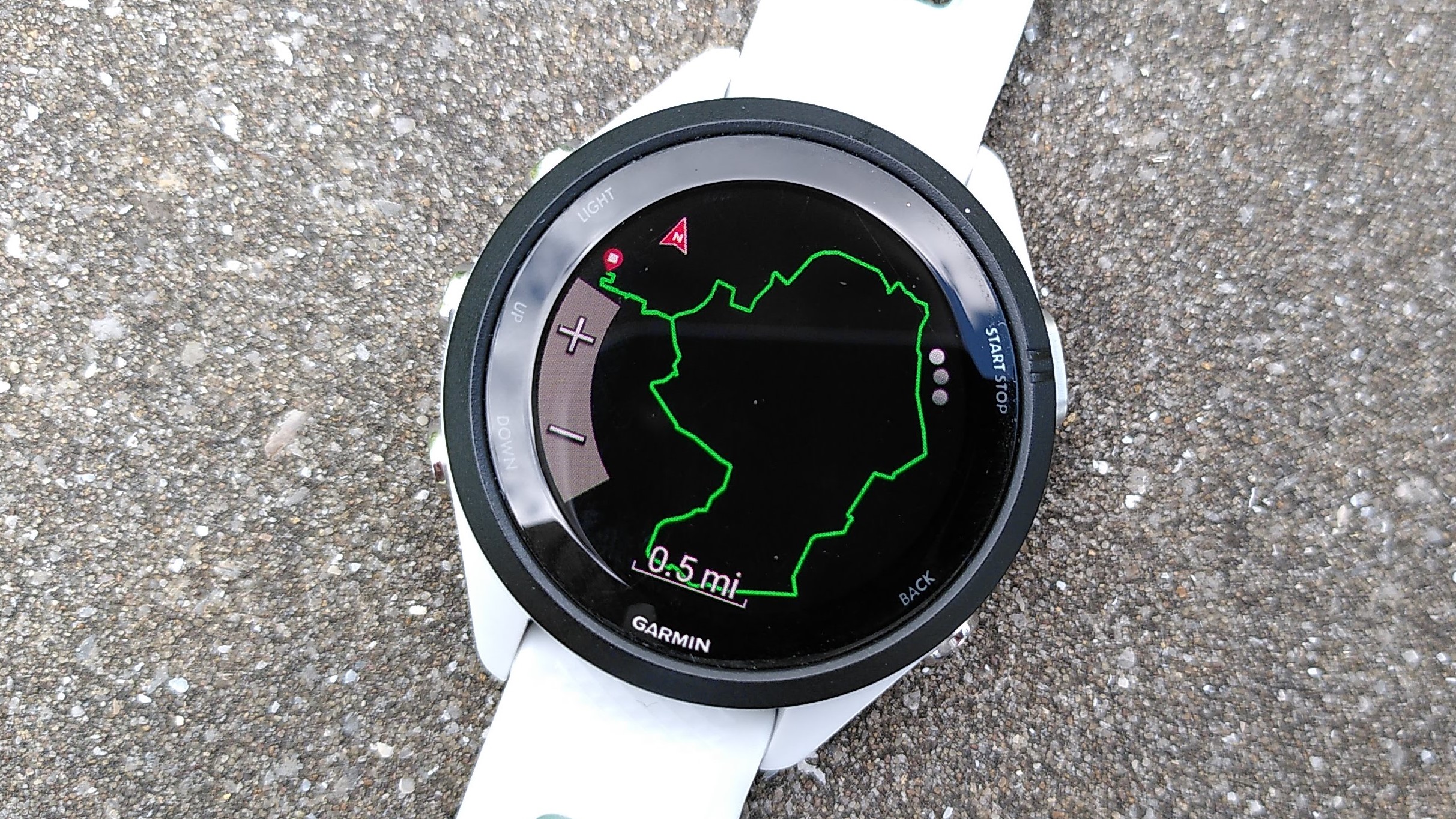
You can upload running and cycling routes to the Forerunner 265 from the Garmin Connect app, but navigation is limited. You don't get full maps, instead being directed by only an arrow and a line on screen, as shown in the photo above. This is understandable (the Forerunner 255 has the same limitations) but still seems a shame when you have a high-resolution AMOLED display on your wrist. Such screens are great for maps, so it feels like a missed opportunity.
GPS accuracy, however, is excellent. Like the Forerunner 255 before it, the 265 has multi-band GPS, which helps compensate in tricky areas near cliffs, under tree cover, or by tall buildings where the radio signal might ordinarily be blocked or deflected. On my pre-measured 5km route, the watch measured the completed distance to within five meters, which is well within the margin of error that comes with running on roads rather than a track. It's one of the most accurate GPS watches I've tested, exceeding the performance of some much pricier devices.
At the end of your workout, you'll see a summary of your route (if appropriate) and graphs of stats including your heart rate, power zones, and speed. This is where the AMOLED screen shines; all graphs are crisp and easy to read, and make great use of color to differentiate between values.
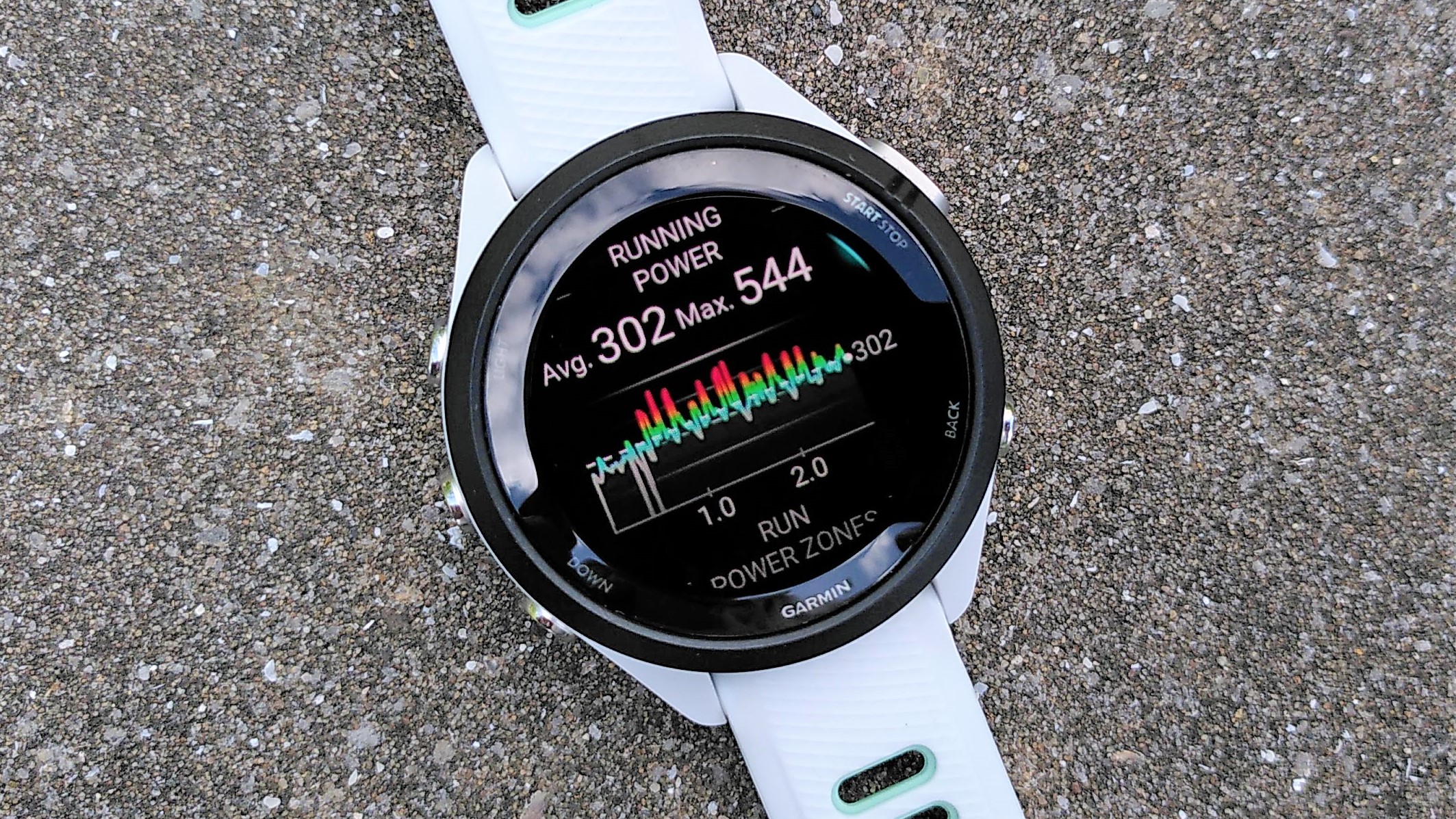
If you're a runner, the watch will also provide details such as running power, ground contact time, cadence, and vertical oscillation, which can tell you a lot about your running form and how it changes during your workouts. For example, you might notice that ground contact time increases later in your run as you begin to tire and your form stats to degrade.
Like all Garmin watches, the Forerunner 265 works best when worn all day and night, so it can help you strike a good balance between work and recovery. Sleep tracking works well, and during my tests the watch accurately detected when I fell asleep (unlike some GPS watches that mistake time spent reading in bed for light dozing).
At the time of writing the Forerunner 265 can't track naps. That may change if Garmin rolls out its forthcoming Sleep Coaching to watches released in the last year, but I wouldn't count on it. The Forerunner 255 and 265 haven't received the new Hill Score and Endurance Score features that are being rolled out to higher end watches, and I suspect it may be the same story with Sleep Coaching.
Overnight, the watch can track your blood oxygen saturation (SpO2), respiration rate, and heart rate variability (HRV). The most useful of these is HRV. The watch will take a few nights to establish a baseline, then inform you if your HRV becomes usually low or high. Low HRV can be a sign that your body is under more stress than usual, which might be due to illness or increased recovery needs from intense workouts.
The Forerunner 265 presents all this data clearly with neat graphs showing historic trends and personalized advice to help you understand it and take action. Again, the charts are all much clearer than on the Forerunner 255, making the most of the upgraded screen.
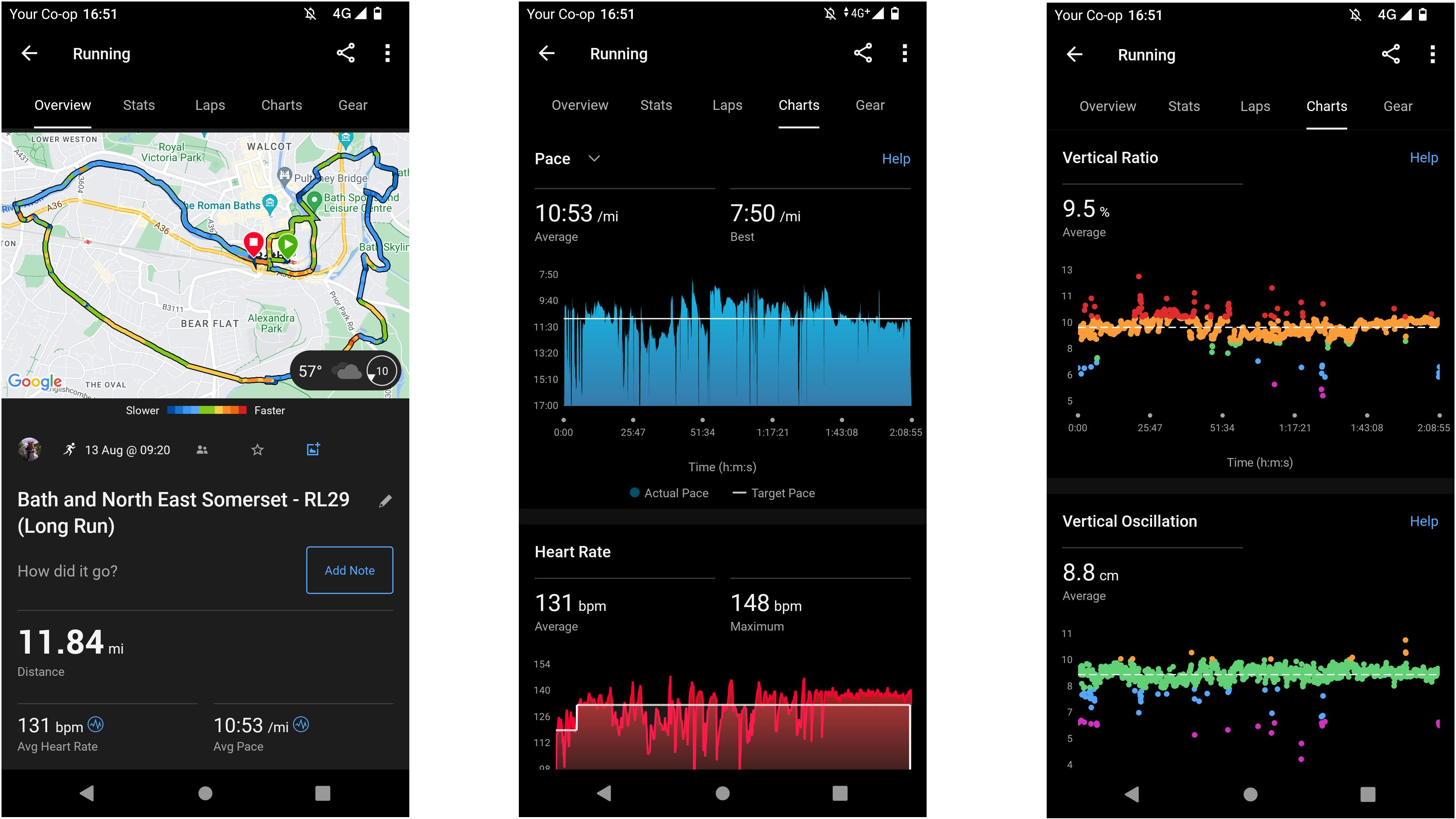
Like all Garmin watches, the Forerunner 265 syncs with the Garmin Connect app on your phone, where you can browse through even more historic data, view detailed maps of your runs and rides, and get personalized suggestions.
The app also allows you to make connections with friends and family so you can encourage one another, leave comments on activities, and engage in friendly competitions. You can work towards virtual badges too, which are earned for feats like achieving a personal best, climbing the equivalent of Everest over the course of several weeks, or recording an activity on Christmas Day. The badges don't give you any tangible benefits, but are weirdly addictive and there are online communities dedicated to finding ways to get as many as possible.
The Garmin Forerunner 255 was an excellent sports watch, and the 265 takes all its best features and adds an extra coat of polish. Not only does its upgraded screen look better, its touch controls make the whole experience of using the watch smoother and easier.
It's just a shame that there's still no support for proper maps. If you want a watch that you can use for exploring new routes, you might be better served by the similarly priced Coros Pace 2, which now offers excellent turn-by-turn navigation, and easy route creation in the Coros mobile app.







